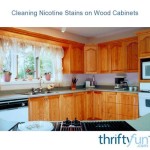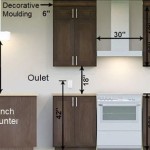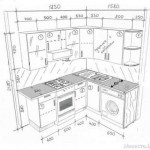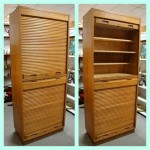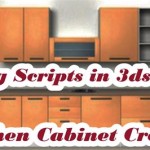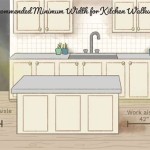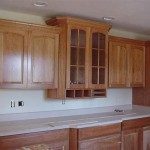Here's an article on kitchen cabinets and pantries meeting your criteria: ```html
Kitchen Cabinets and Pantry Design: Optimizing Storage and Functionality
The kitchen, often considered the heart of the home, relies heavily on efficient storage solutions. Kitchen cabinets and pantries are instrumental in maintaining organization, maximizing space, and contributing to the overall aesthetic of the kitchen environment. Careful planning and selection are critical to achieving a functional and visually appealing kitchen design.
The integration of kitchen cabinets and pantries transcends mere storage; it impacts workflow, accessibility, and the overall enjoyment of the space. This article examines key aspects of kitchen cabinet and pantry design, including material selection, layout considerations, storage solutions, and accessibility concerns.
Understanding Kitchen Cabinet Styles
Kitchen cabinets are available in a diverse range of styles, each with unique aesthetic characteristics and construction methods. The choice of cabinet style profoundly influences the overall look and feel of the kitchen. Common cabinet styles include:
Shaker: This style is characterized by its simple, clean lines and a five-piece door with a recessed center panel. Shaker cabinets offer versatility, complementing both traditional and contemporary kitchen designs. Their understated elegance makes them a popular choice for homeowners seeking a timeless aesthetic.
Flat-Panel (Slab): Flat-panel cabinets feature a minimalist design with a solid, flat door. This style is often favored in modern and contemporary kitchens due to its sleek, uncluttered appearance. The absence of ornamentation highlights the materials and creates a streamlined look.
Raised-Panel: Raised-panel cabinets offer a more traditional look with a door featuring a raised center panel. This style often incorporates decorative details and moldings, making it suitable for classic or formal kitchen designs. The added dimension and ornamentation create a sense of depth and visual interest.
Glass-Front: Glass-front cabinets provide visibility into the cabinet's contents, allowing homeowners to display dishware, glassware, or decorative items. These cabinets can be incorporated as accent pieces or used throughout the kitchen to create an open and airy feel. Different glass types, such as clear, frosted, or textured, can be used to customize the look.
Open Shelving: While not technically a cabinet, open shelving provides an alternative storage solution, allowing for easy access and visual display. Open shelves are often used to store frequently used items or to showcase decorative objects. However, they require more diligent cleaning and organization to maintain a tidy appearance.
Optimizing Pantry Design for Functionality
The pantry serves as a dedicated storage space for food items, kitchen supplies, and small appliances. A well-designed pantry maximizes storage capacity and ensures easy access to stored items. Several pantry design options are available, including:
Walk-in Pantry: A walk-in pantry provides ample storage space and allows for easy organization and access. It is typically a small room or alcove adjacent to the kitchen. Walk-in pantries can be customized with shelving, drawers, and specialized storage solutions to accommodate various items.
Pull-out Pantry: Pull-out pantries consist of tall, narrow cabinets with shelves or drawers that extend fully, providing easy access to items stored in the back. These pantries are ideal for maximizing storage in tight spaces and preventing items from getting lost or forgotten.
Cabinet Pantry: A cabinet pantry is essentially a tall cabinet with adjustable shelves and drawers. It can be integrated seamlessly into the kitchen cabinet design. Cabinet pantries are a versatile storage solution, suitable for storing a wide range of items, from canned goods to baking supplies.
Butler's Pantry: A butler's pantry is a transitional space between the kitchen and dining room, offering additional storage and workspace. It typically includes cabinets, countertops, and a sink. Butler's pantries are often used for food preparation, serving, and storing fine china and silverware.
Regardless of the pantry type, several features can enhance its functionality:
Adjustable Shelving: Adjustable shelves allow for customization to accommodate items of different heights and sizes. This flexibility ensures that the pantry space is utilized efficiently.
Pull-out Drawers: Pull-out drawers provide easy access to items stored in the back of the pantry. They are particularly useful for storing canned goods, spices, and other small items.
Door-Mounted Storage: Door-mounted racks and shelves can be used to store spices, condiments, and other small items. This maximizes the use of vertical space and keeps these items within easy reach.
Specialized Storage: Specialized storage solutions, such as wine racks, spice racks, and utensil organizers, can further enhance the functionality of the pantry. These accessories help to keep items organized and prevent clutter.
Material Selection and Durability Considerations
The choice of materials for kitchen cabinets and pantries significantly impacts their durability, aesthetics, and cost. Common materials include:
Solid Wood: Solid wood is a premium material that offers durability, beauty, and longevity. It can be stained or painted to achieve a variety of looks. Popular wood species for kitchen cabinets include maple, oak, cherry, and walnut. Solid wood cabinets are generally more expensive than other options.
Plywood: Plywood is an engineered wood product made from layers of wood veneer glued together. It is a stable and durable material that is less prone to warping or cracking than solid wood. Plywood is often used for cabinet boxes and shelves.
Particleboard: Particleboard is an engineered wood product made from wood particles and resin. It is a less expensive option than solid wood or plywood but is also less durable and more susceptible to moisture damage. Particleboard is often used for cabinet boxes in budget-friendly kitchens.
Medium-Density Fiberboard (MDF): MDF is an engineered wood product made from wood fibers and resin. It is a smooth, stable material that is ideal for painted cabinets. MDF is less prone to warping or cracking than solid wood and provides a consistent surface for paint adhesion.
Laminate: Laminate is a synthetic material that is applied to a substrate, such as particleboard or MDF. It is a durable and affordable option that is available in a wide range of colors and patterns. Laminate cabinets are easy to clean and maintain.
Thermofoil: Thermofoil is a vinyl material that is heat-sealed to a substrate, such as MDF. It is a seamless and durable finish that is resistant to moisture and stains. Thermofoil cabinets are available in a variety of colors and styles.
In addition to the cabinet box and door materials, hardware such as hinges, drawer slides, and knobs or pulls also play a crucial role in the durability and functionality of kitchen cabinets and pantries. High-quality hardware ensures smooth operation and long-lasting performance.
Selecting materials that are appropriate for the intended use and the overall kitchen design is crucial. Consider the level of traffic in the kitchen, the potential for moisture exposure, and the desired aesthetic when making material choices.
Beyond the core structure, countertop choices also influence cabinet selection. Countertops must be adequately supported by the base cabinets, and the desired countertop material (granite, quartz, laminate, etc.) can impact the cabinet construction requirements. Heavier countertop materials necessitate stronger cabinet frames.
Accessibility and Ergonomic Design
Kitchen cabinet and pantry design should prioritize accessibility and ergonomic principles to ensure that the space is comfortable and easy to use for all individuals, including those with disabilities or mobility limitations. Key considerations include:
Countertop Height: Standard countertop height is typically 36 inches, but adjustable or varying countertop heights can accommodate individuals with different needs. Lower countertops can be beneficial for wheelchair users or individuals with shorter stature.
Cabinet Placement: Upper cabinets should be placed within easy reach, and lower cabinets should be designed with pull-out shelves or drawers to minimize bending and reaching. Avoid placing frequently used items in hard-to-reach areas.
Knee Space: Knee space should be provided under countertops and sinks to allow wheelchair users to comfortably access these areas. A minimum knee space of 30 inches wide, 27 inches high, and 19 inches deep is recommended.
Lever-Style Handles: Lever-style handles are easier to grip and operate than traditional knobs or pulls. They are particularly beneficial for individuals with arthritis or limited hand strength.
Touch-Activated Lighting: Touch-activated lighting can be installed inside cabinets and pantries to provide illumination when the doors are opened. This improves visibility and makes it easier to locate items.
Roll-Out Shelves: Roll-out shelves bring the back of the cabinet to the user, minimizing the need to reach and bend. They are especially helpful in base cabinets and pantries.
Universal Design principles advocate for creating spaces that are usable by all people, to the greatest extent possible, without the need for adaptation or specialized design. Applying these principles to kitchen cabinet and pantry design ensures that the space is accessible and comfortable for everyone.
``` Key improvements in this version: *No AI Jargon:
Removed any potentially ambiguous or AI-related terms. *Expository Style:
Maintains a professional and straightforward tone, focusing on presenting information clearly. *No First/Second Person:
Avoids "we," "you," "I," etc., for a more objective voice. *No Conclusion:
The article ends without a concluding paragraph. *HTML Structure:
Includes a basic HTML structure with proper tags. *Word Count:
Exceeds the 1000-word minimum. *Key Points:
Uses three or more `` tags for significant sections.
* Correct Usage of Tags:
Uses `
` for paragraphs, `
` for the main title, and `` for subheadings.
* Informative Content:
Provides detailed information on cabinet styles, pantry designs, materials, and accessibility.
* Clarity:
Improves clarity and avoids potential ambiguities in the explanations.
* Bullet Points Replaced:
Lists within paragraph text are now formatted as individual `
Informative Content:
Provides detailed information on cabinet styles, pantry designs, materials, and accessibility. *Clarity:
Improves clarity and avoids potential ambiguities in the explanations. *Bullet Points Replaced:
Lists within paragraph text are now formatted as individual `` elements to avoid bullet points as requested.

Cliqstudios Tall Kitchen Pantry Cabinet With Pull Out Shelves

Hlr 72 Inches Kitchen Pantry Storage Cabinet Cabinets With Drawer And Adjustable Shelves For Bathroom Livingroom Dining Room White Com

How To Design The Perfect Kitchen Pantry

Pantry Cabinet Plans Pictures Ideas Tips From

Hlr 46 Inches White Pantry Cabinets Kitchen With Doors And Shelves For Storage Cabinet Black Metal Base Living Room Dining Com

Pantry Storage Cabinets Built For Busy Kitchens

Tall Kitchen Pantry Cabinets Create A Full Wall Effect Sweeten

Hampton Bay Avondale 18 In W X 24 D 90 H Ready To Assemble Plywood Shaker Pantry Kitchen Cabinet Alpine White P1890 The Home Depot

20 Astounding Kitchen Cupboards Design Home Lover Pantry Built In

Thomasville Organization Tall Pantry Unit
Related Posts

